The Power of Programmatic SEO: From Zero to 1M Visits


Vilius Dumcius
In This Article
If you’re looking to improve your online visibility and traffic, then programmatic SEO is the perfect solution for you. It’s an efficient way to drive traffic to your current site or to build a new site from scratch and target a keyword cluster.
Programmatic SEO is the process of using automated tools to generate content and pages that are valuable to your readers. With it, you don’t need to write articles for each of your target keywords manually - you can build a base structure and feed it with variable data.
But it’s tricky to find the balance between spam articles and automated valuable content.
In this article, we show you how to go from zero to a successful programmatic SEO website. We show the basic ideas behind it, how you can incorporate it into your projects, and the main benefits and challenges.
Only rather than telling you how to do it, we are going to do it together.
This article is the first of a four-part series to teach you everything you need to know about programmatic SEO. It’s a free programmatic SEO course that you can complete in just four steps. In this series, we find a good keyword cluster with the potential for millions of visits per year. Then we find the right tech stack to implement it, and we walk you through the implementation process.
Here are the four main topics we will cover in this series:
- A programmatic SEO blueprint
What is programmatic SEO, why you should do it, how to plan your site, and how to research keywords. - How to perform automated web scraping in any language
How to pick the right programming language and libraries depending on your target sites, how to set up the backend for automated web scraping, and the best tools for web scraping. - How to build a Facebook scraper
Here we dive into how to collect data from our target site, how to collect data from other sites (such as Amazon), how to process data, and how to deal with errors. - Easy programmatic SEO in WordPress
In the last part of the series, you are going to learn how to use your scraped data to build a WordPress site.
Let’s get started!
What Is Programmatic SEO?
Programmatic SEO is the process of using automated tools to generate pages with valuable content for your visitors.
These pages usually rely on variables, templates, and sometimes automatically generated content that needs little to no human interaction.
For example, instead of manually writing the guide to the best tourist attractions in a city, Tripadvisor automatically loads a list from their database.
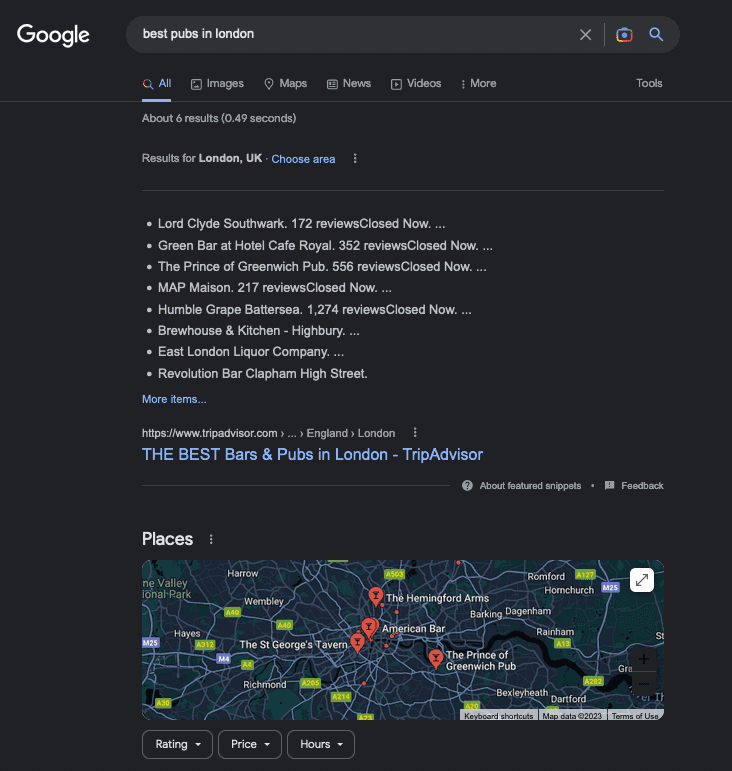
It’s worth mentioning that you don’t need to make your entire site to be programmatic. You can create just specific programmatic sections on your site and regular content on others.
Does Programmatic SEO Work?
Yes, programmatic SEO can be an effective method to bring more traffic. Keep in mind that Google is going to notice that you are pushing automated content. So make sure it’s valuable to your readers and that each page is unique.
When building regular sites, you need to find keywords that reach your target audience, have a good volume, and are possible to rank for.
On the other hand, programmatic SEO is about finding low-competition keyword clusters . You don’t need a big win. You can have 5,000 pages with 20 visits each and get 100,000 visits per month, or 1.2 million visits per year.
Sometimes you might strike gold in your search and find low-competition and high-traffic keywords like we did in our example. But that’s not the norm, and you can do just fine with low-traffic keywords.
Advantages of Programmatic SEO
In general, programmatic SEO is a numbers game. You are creating many pages at once while providing value to your users.
You can generate in-depth content, stats, and visuals to help users better understand data or find solutions at scale.
Additionally, programmatic SEO pages are very easy to replicate. You can create new pages and rank for new long-tail terms in minutes.
Disadvantages of Programmatic SEO
Programmatic SEO has a higher upfront cost. You need to carefully analyze target pages, keyword clusters, and data sources, and create templates. Granted, each new page takes a lot less time to create, but still, the upfront cost is something to take into account.
Programmatic pages have a higher risk of being flagged as duplicate content. You need to be careful and make sure to include unique content on each page, otherwise, you might get penalized.
There are other SEO challenges, particularly difficult for programmatic sites. Google might not index all your pages. You might have thin content if you don’t have a lot of text and just stats or charts. You might be manually penalized for spam. You also risk being hit by algorithm updates.
In addition, there are platform risks as well. Some AI tools (such as Open AI) might include fingerprints to flag AI content. Google can penalize those as well.
If you are scraping other sites to get data for your programmatic website, you can get blocked. For this reason, a service like IPRoyal’s residential proxies is essential. With it, you can change your IP address each time you visit your target site. Therefore, site owners won’t be able to track you down and block you. For all they know, each of your visits appears to be different users in different places in the world.
Overview of Programmatic SEO
Programmatic SEO makes sense when you have pages that rely on a specific formula, such as listing points of interest (TripAdvisor), listing connectors (Zapier), or aggregating data (such as Failory’s pitch decks).
If you ensure that the pages you create have enough content and value on their own, it doesn’t matter if you have created them manually or using templates.
Programmatic SEO Examples
Here are some examples to spark your creativity and show you how some sites managed to create valuable content at scale.
Google Analytics Is Illegal in These Countries
The Simple Analytics team has created a nice chart showing countries in which Google Analytics is illegal (or legal):
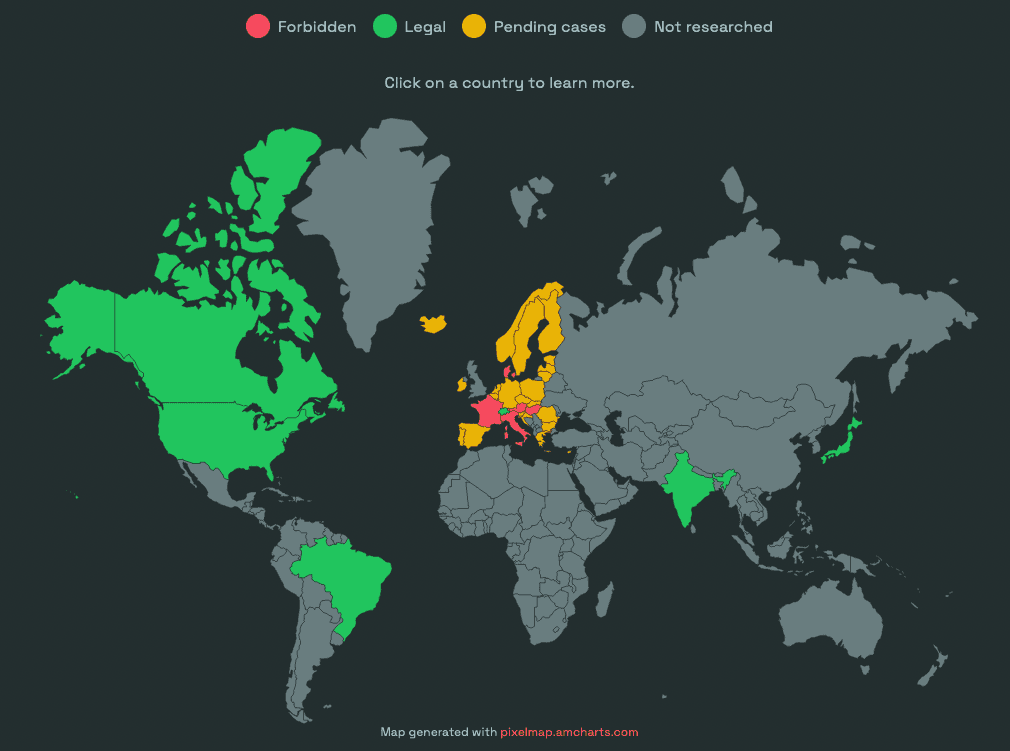
You can click on these countries to load more:
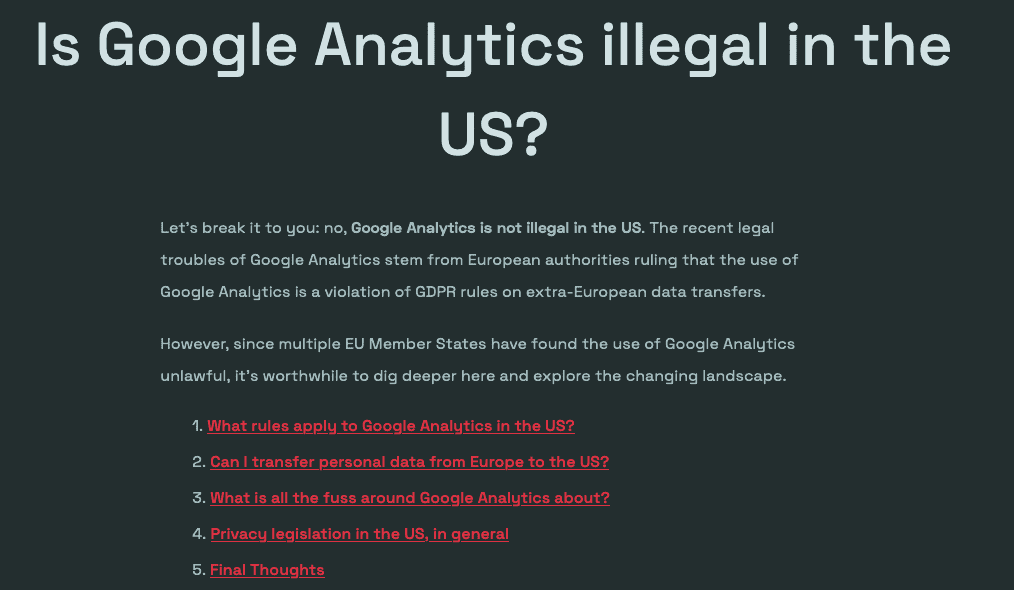
These pages all follow a very similar formula with a set template. That’s where your programmatic pages can shine. You just need a reliable data source for this information, and you can deploy hundreds of pages, one for each country.
Zapier Integrations
Zapier has many integrations and pages explaining how they connect one app to the other.
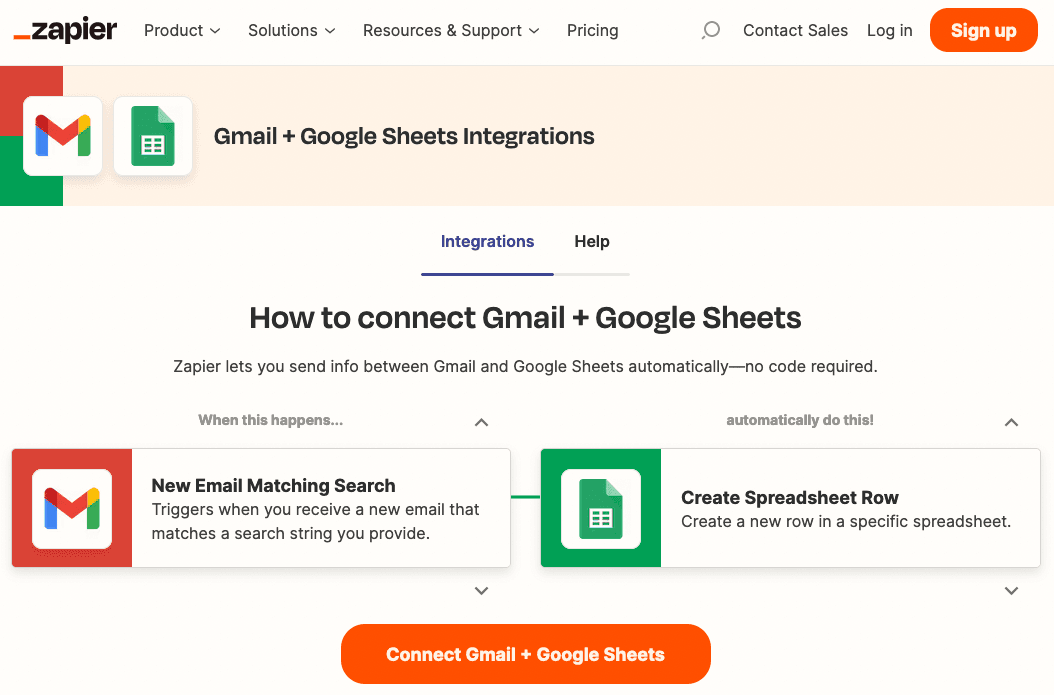
G2 Comparison Charts
G2 generates head-to-head comparison charts for thousands of apps programmatically:
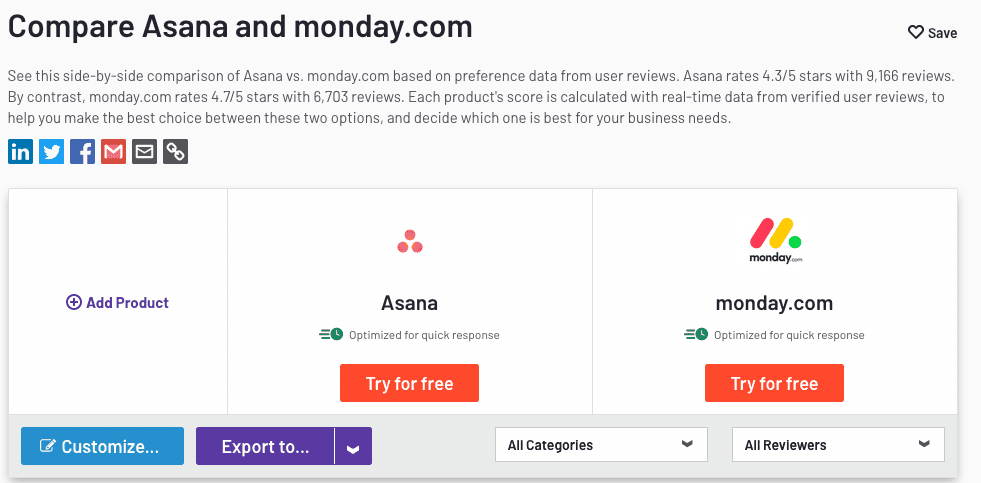
Payscale Average Salaries
Payscale, Glassdoor, and other companies generate stats about jobs that target specific keywords.
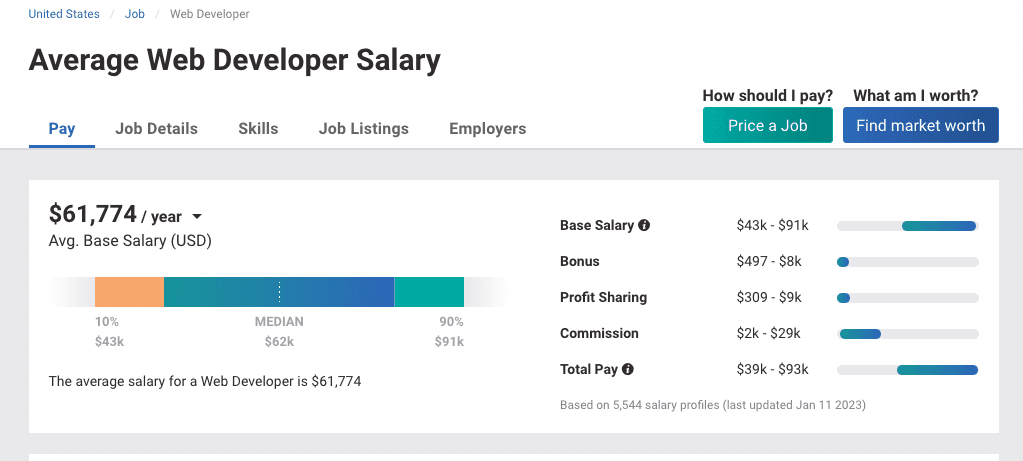
World Population Review
This website creates programmatic pages with data about places with population, growth rate, and how they compare to others.
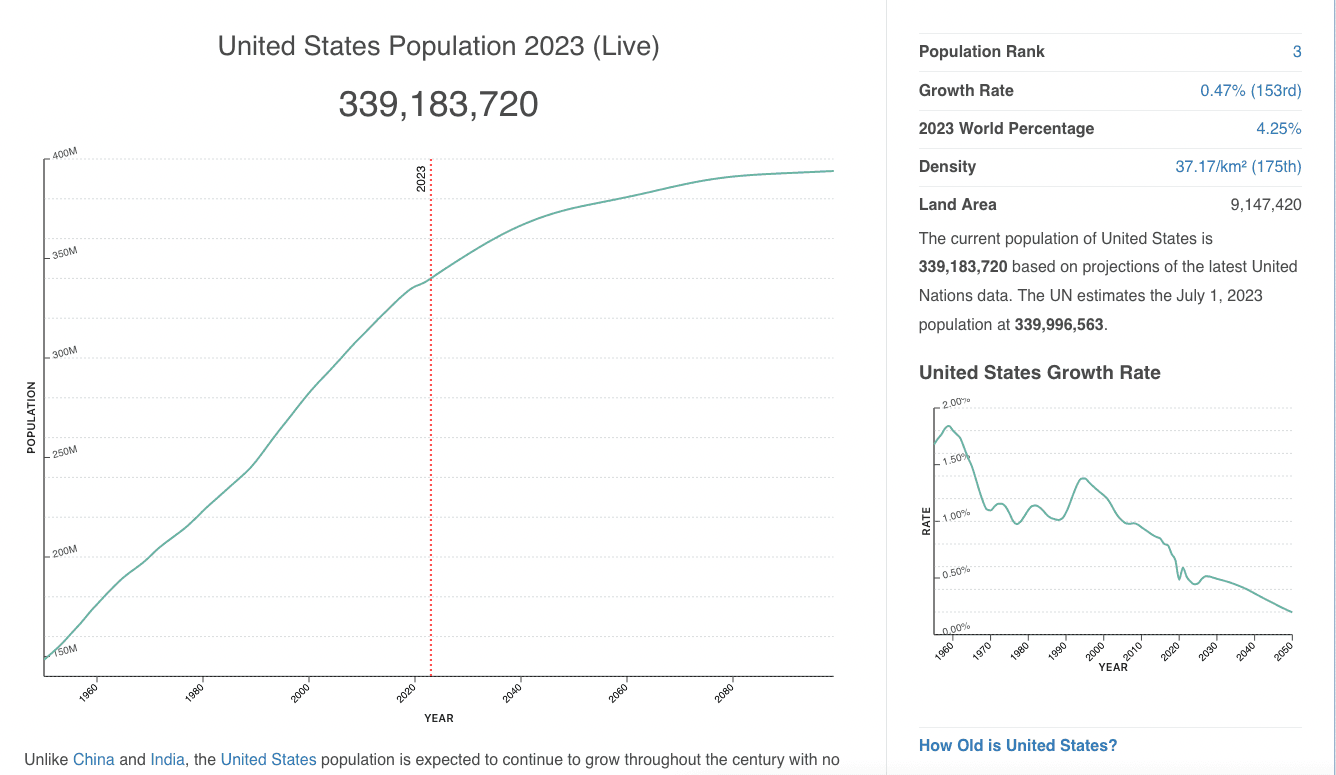
How Do You Implement Programmatic SEO?
You can implement programmatic SEO in just three steps:
- Find out keyword clusters;
- Define your site structure, templates, and data points to target these keywords;
- Collect, process, and display data on your site.
Let’s explore each of these points in detail now.
How to Research Keywords for Programmatic SEO
There are many keyword research guides out there, but let’s focus on what is crucial for programmatic SEO.
If you have a site already, you can look for ways to generate programmatic content for it, like Zapier and TripAdvisor did.
If you want to create a site from scratch, you can just explore keywords about your interests, hobbies, expertise, or keywords related to popular sites in general.
You can use SEO tools (such as SEMRush and Ahrefs ) to help you with that. Some of them even have free trials.
At this point, you don’t need to look for keywords with huge volumes. Anything in the 10-100 range is good enough as long as you can rank for these keywords.
You can apply modifiers to your desired keywords to see if you can find good long-tail keywords. So instead of just laptops, you can search for laptops in a niche (laptops for developers), comparisons (Apple vs. Dell laptops), within a price range, dates (in 2023), location-specific (best laptops in the UK), and so on.
In our example, we started with Facebook as a seed keyword. It’s a popular site, and it’s likely that there are many search terms related to it. Let’s plug this term on Semrush and see what happens:
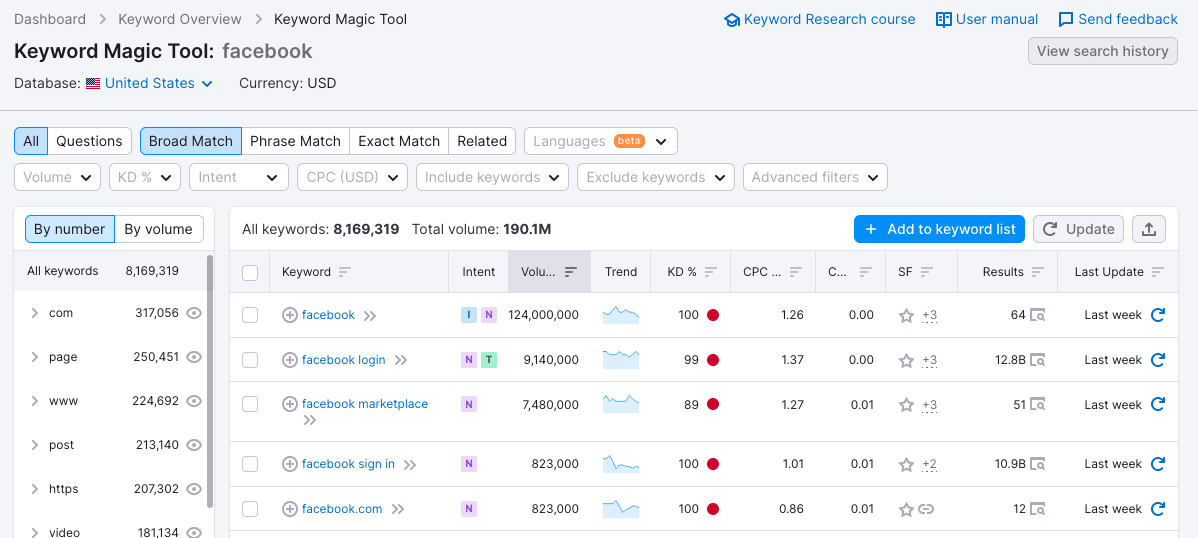
All these keywords are hard to rank for. Let’s filter by keyword difficulty. Anything below 30 should be a good start:

Right away, you can notice a pattern: “facebook marketplace [city]”.
These are good keywords that can be used in a programmatic website. Upon further inspection, there are 5,440 keywords with low difficulty on the “facebook marketplace” search, with a total volume close to 1M searches per month.
If you don’t have access to a keyword research tool, you can do it for free by following these steps:
- Use Google’s autocomplete tool to check some popular autocompletes for your seed keyword, write them down.
- Then check the search volume with Google’s keyword planner, make sure these aren’t’ zero-volume keywords (anything around 10-100 is good enough).
- Finally, check the keyword difficulty with Ahrefs keyword difficulty checker for free.
This should be a good starting point for your programmatic SEO research.
How to Structure a Successful Programmatic SEO Site
Now it’s time to find out how you can fulfill the search intent for these keywords at scale.
The programmatic site examples above are a good starting point. They include charts, stats, maps, images, and text. You don’t need to create a page that looks like a blog post - you can find the right format depending on what your users want.
You need to define what are your base templates and what variables you have on them. That’s the information that you need to scrape and process.
Our programmatic website provides data about the Facebook marketplace for a city. A good starting point to make this site useful is to ask yourself how can you create something better than what is on Google results now?
All results point to Facebook itself. So how can we provide a good experience for some users? What are the top results lacking?
There is no right answer in this case. You need to squeeze your creative juices and try to find ways to make it better.
In our demo site, we are going to group listings as e-commerce products. This allows users to quickly pick items that they want and see what options they have for them.
So instead of showing a lot of random items at once:

We are going to display a list of pre-selected products that the users can choose from. On the product page, they can see the marketplace listings as purchase options.
This is similar to what Amazon does on its product pages, with many options to choose from:

This allows you to provide value to users since they can see many related listings at once. And this saves you a lot of processing power, given that you can control which products you want to scrape.
Following this idea, this is a mockup for the city landing page:

On this page, you can see a title with the target keyword. Then, a few stats about listings, products, and freebies.
Users can filter products to see only results based on their desired product condition (new/used), search radius, and date listed.
The number above the product picture is the number of listings for that product. Then there’s the product title, prices, and retail price to serve as a comparison point.
This is the product page:

From these, we know that we need to scrape these data points:
- Amazon and other online shops (retail price, product specs, product images, product reviews);
- Facebook Marketplaces (Listing details, listing location, listing link).
That’s it. This is a rough plan, but we can adjust to it as we implement it. The important part is to know that we need two data sources (regular retail sites and Facebook) and a database to store all this data.
How to Collect Data for Programmatic SEO
There are many ways to collect data from external sites. You can hire a VA or use APIs and public databases. But a fireproof method is scraping data from trusted sources.
Notice that there is a significant value in combining data from multiple sources. This saves your visitors time and can be useful for them. For instance, instead of just listing the Facebook marketplace posts, we are aggregating them and comparing them to retail items to check if they are a good deal or not.
You can use AI tools to generate real content automatically. This can be risky, though, as AI content might be flagged to Google as AI-generated. The best use for these tools is in combination with a real human who edits the content to make sure it is accurate.
Some data sources can be useful as well, such as Reddit (r/Data, r/DataHoarder, r/Datasets, r/OpenData), GitHub, Twitter, Awesome Public Datasets, Kaggle, Nasa EarthData, and others.
In our example, we are extracting data from Amazon and Facebook Marketplaces. So we need to set up a web scraper to collect this data and a database to save it and store the scraping rules.
In addition, we need to publish this data to WordPress. We are using plugins to automatically publish WP posts from files since that’s an easy way to implement it.
Next Steps
Today you learned how to plan a programmatic SEO website to reach millions of visits. You saw some examples of great programmatic SEO pages, and you worked with us on planning a site based on Facebook Marketplaces.
Stay tuned for the next steps of this series, where we dive into how to code this site.
FAQ
What are programmatic pages?
Programmatic pages are pages generated based on variables coming from a database. Rather than writing the content of a page like you would do with a blog post, you can load data to populate a page automatically.
This technique allows you to build pages that look like posts, or pages that are clearly populated from variables. They are usually used in a programmatic SEO strategy and allow you to publish content at scale.
What is a programmatic website?
A programmatic website is a site that contains programmatic pages. They are built with content coming from variables in a database, rather than simple content typed down manually for each page.
You can create an entire site using programmatic content, or you can just create sections of your site to target specific keyword clusters.
What is adaptive search in SEO?
Adaptive search describes the strategy of complying with the search engine requirements as much as possible. This doesn’t mean trying to trick search engines but rather adjusting to their rules and algorithm updates.
This term plays a big role in programmatic SEO. Automated content has a higher risk of being penalized. For this reason, you need to make sure that you comply with SEO standards. This shows search engines that you don’t want to create spam. Instead, you are creating real, valuable content at scale.

Author
Vilius Dumcius
Product Owner
With six years of programming experience, Vilius specializes in full-stack web development with PHP (Laravel), MySQL, Docker, Vue.js, and Typescript. Managing a skilled team at IPRoyal for years, he excels in overseeing diverse web projects and custom solutions. Vilius plays a critical role in managing proxy-related tasks for the company, serving as the lead programmer involved in every aspect of the business. Outside of his professional duties, Vilius channels his passion for personal and professional growth, balancing his tech expertise with a commitment to continuous improvement.
Learn More About Vilius Dumcius


